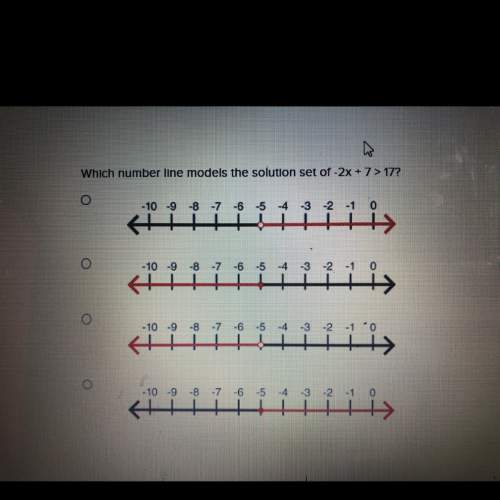
Mathematics, 24.08.2019 17:50 PONBallfordM89
K/13 = 0.6/0.5 what does that equal

Answers: 1


Other questions on the subject: Mathematics

Mathematics, 21.06.2019 17:30, Vampfox
Monthly water bills for a city have a mean of $108.43 and a standard deviation of $32.09. find the probability that a randomly selected bill will have an amount greater than $155, which the city believes might indicate that someone is wasting water. would a bill that size be considered unusual?
Answers: 1

Mathematics, 21.06.2019 20:30, angellll4455
Secant be and cf intersect at point d inside a what is the measure of cde
Answers: 1


Mathematics, 21.06.2019 23:00, kj44
Each of the following data sets has a mean of x = 10. (i) 8 9 10 11 12 (ii) 7 9 10 11 13 (iii) 7 8 10 12 13 (a) without doing any computations, order the data sets according to increasing value of standard deviations. (i), (iii), (ii) (ii), (i), (iii) (iii), (i), (ii) (iii), (ii), (i) (i), (ii), (iii) (ii), (iii), (i) (b) why do you expect the difference in standard deviations between data sets (i) and (ii) to be greater than the difference in standard deviations between data sets (ii) and (iii)? hint: consider how much the data in the respective sets differ from the mean. the data change between data sets (i) and (ii) increased the squared difference îł(x - x)2 by more than data sets (ii) and (iii). the data change between data sets (ii) and (iii) increased the squared difference îł(x - x)2 by more than data sets (i) and (ii). the data change between data sets (i) and (ii) decreased the squared difference îł(x - x)2 by more than data sets (ii) and (iii). none of the above
Answers: 2
You know the right answer?
K/13 = 0.6/0.5 what does that equal...
Questions in other subjects:

German, 16.01.2020 08:31

Biology, 16.01.2020 08:31

Mathematics, 16.01.2020 08:31

English, 16.01.2020 08:31






 =
=  equals k = 15.6
equals k = 15.6


